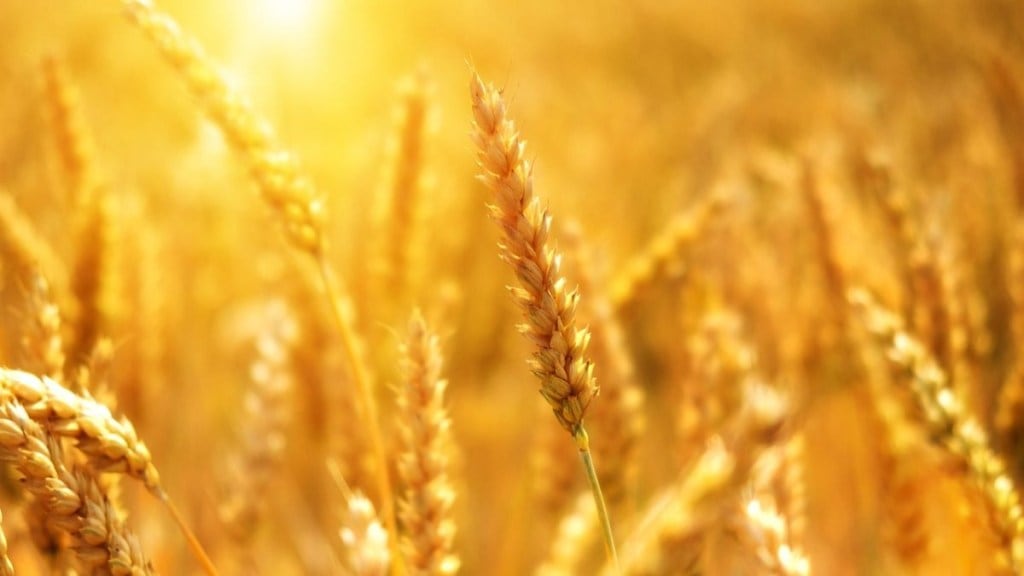About a month ahead of the start of harvesting of wheat in major growing areas in Punjab, Haryana, Rajasthan and Madhya Pradesh, the standing crops appear robust, weather officials and scientists said, allaying fears of grain stocks falling to precarious levels in the mid-summer months.
An unusual increase in temperature recorded by the India Meteorological Department (IMD) in February has raised some concerns over possible heat weaves adversely affecting the wheat crop by damaging the kernel.
“Currently there has not been an unusual spike in the temperature in key wheat-sown areas and there is no cause of worry about the standing crop,” Rajbir Yadav, wheat breeder and principal scientist, Indian Agricultural Research Institute (IARI), Delhi, told FE. He said that a combination of sunny days and low night temperatures currently prevailing is conducive for wheat crop.
“Last year, temperature prevailing in northern and central regions in March and April was hottest in many decades which continued for several days, thus impacting grain formation and eventual wheat output,” Yadav said.
For the current crop year (2022-23), the government has estimated a record wheat harvest of 112.18 million tonne (mt). Total area planted with wheat crop has risen by only 0.13 million hectare (mh) to 34.32 mh in current crop year from the year-ago period, but the crop yields are expected to be better due to good weather conditions.
“In peninsular, central and parts of eastern India timely sown crop is reaching maturity stage. North western part’s timely crop is in the heading stage and so far there is no major incidence of yellow rust. All these factors are indicators of bumper harvest of wheat,” Gyanendra Singh, director, Indian Institute of Wheat and Barley Research (IIWBR), a Karnal-based institute, said.
Institutions such as IARI and IIWBR affiliated to Indian Council for Agricultural Research (ICAR) and Punjab Agricultural University have developed most of the varieties of wheat seed currently being cultivated by farmers.
The IMD on Sunday forecast light rainfall over the next two days in Haryana and Punjab. IMD officials said that preliminary projections for March and April currently do not indicate any sharp spike in temperatures and temperature is predicted to be around normal level.
Meanwhile, to boost the government’s stock which is expected to plummet to around 9.5 mt by April 1, against the buffer of 7.4 mt, the Food Corporation of India (FCI) and state agencies are aiming at procuring at least 30 mt of wheat in 2023-24 marketing season (April-June).
The wheat exports ban which was imposed in May 2022 to improve domestic supplies is likely to continue till the end of June this year and the government will review it only after achieving the procurement target. As per the buffer norm, FCI needs to have a buffer stock of 27.57 mt of wheat by July 1.
Due to lower production and higher global demand, the procurement in the 2022-23 marketing season fell by more than 56.6% to only 18.8 mt (target was 44 mt) against 43.3 mt purchased from farmers in the previous year.
To curb the spike in prices, the government has slashed the reserve prices of wheat to be sold in the open market by the FCI to `2,150/quintal from the next e-auction slated to be held on Wednesday.
The FCI has offered 1.17 mt of wheat to be sold to bulk buyers at a price which is marginally higher than the minimum support price (MSP) of `2,125/quintal the next marketing season 2023-24. FCI has sold 1.4 mt of wheat in the last two e-auctions held earlier this month.
Food ministry officials said the focus is on reducing wheat prices to MSP level prior to the commencement of procurement by
FCI and state agencies from April 1.
Inflation in wheat prices rose by a sharp 25.05% on year in January, pushing up retail food inflation to 5.94% from 4.19% reported in the previous month.
In the 2021-22 crop year (July-June), the agriculture ministry had initially predicted wheat production at 111.32 million tonne (mt) which was later revised downward to 107.74 mt while the trade sources pegged the estimated output at a much lower level.

